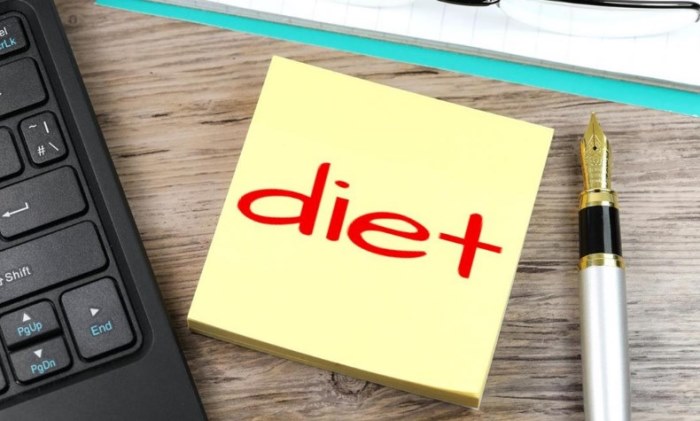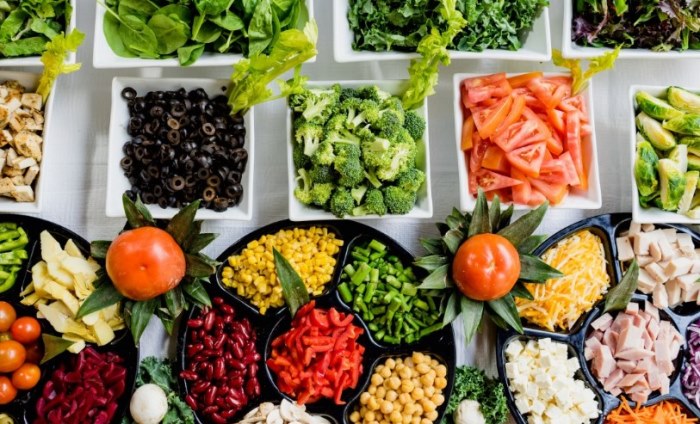Dancing demands a lot of physical energy and requires dancers to stay in good physical shape. It is therefore not as simple as eating cake to build a diet for dancers.
If you or your child are just starting out as a dancer, follow these guidelines for a healthy diet.
Table of Contents
Why Eating Is Important For Dancers?
While dancing is an artistic activity, it cannot be underestimated how strong, flexible, and endurance-minded dancers are. Let’s take a look at how important it is for dancers to eat a healthy diet before moving on to each ingredient.
- A balanced diet fully fuels dancers for continuous practice, rehearsal and performance.
- Provides the necessary nutrients for dancers to maintain muscle, bone, and joint health.
- Helps dancers stay focused throughout the performance.
- Strengthen the immune system, and help dancers reduce the risk of illness and fatigue, which can disrupt their training and competition.
- And equally important, a diet full of macro and micronutrients will help dancers quickly recover from injuries.
What’s A Good Diet For Dancers?
Creating a diet begins with determining how many calories dancers need to consume daily. After that, determine how many calories are made up of carbohydrates, protein, and fat.
According to the International Association for Dance Medicine and Science, the simple formula for estimating calories per dancer is 45-50 calories per kilogram of body weight for women. And 50-55 calories per kilogram of body weight for men.
The ratio of macronutrients in a dancer’s diet should be 55%-60% carbohydrates, 12%-15% protein, and 20%-30% fat. You will learn more about each block later in this article.
In addition, you need to choose the right foods and cooking methods to support the digestive system and provide enough vitamins, minerals, and phytonutrients for dancers.
One problem with the diet is that dancers often have difficulty consuming large portions of food to meet their energy needs. So don’t make them suffer with eating by bringing finesse in preparing meals, rather than simply counting the numbers.
You’ll love: 15+ Cute Hairstyles For Dancers
Main Nutrition For Dancers
Carbohydrate
The percentage of carbohydrates in the diet of a normal healthy person is recommended at 45%-65%. However, this number is higher for dancers.
A dancer should get 55%-60% of calories from carbohydrates and can go up to 65% during training, rehearsal or heavy competition. Another simple formula for estimating carbohydrates is 6-10 grams of carbohydrates per kilogram of body weight.
This is because carbohydrates provide the fastest energy out of the three macronutrients. It is also the main food for muscles. Therefore, a low-carb diet for dancers certainly does not make sense.
- When to eat
Dancers, in addition to the main meals, also need to load up on carbohydrates before, during, and after training, rehearsals, or performances. It should be in the form of snacks or sports drinks and should be refilled 1-2 hours before the activity.
This is the necessary amount of time for glucose to be broken down and metabolized into glycogen stored in the muscles.
In addition, right after finishing the performance, dancers need to take in carbohydrates as soon as possible to help their muscles recover.
- What to eat
Given the relatively high carb content in the diet, this amount should come in the form of polysaccharides. They will be good for the blood sugar of the dancers and add the necessary amount of fiber to help the digestive system stay healthy.
Quinoa, oats, kale, broccoli, and bananas… are considered high-carb and dancer-friendly foods.
And, limit the intake of powdered sugar in the form of monosaccharides such as soft drinks or confectionery.
Fat
Daily fat intake for dancers should equal 1.2g per kg of body weight, which turns out 20%-30% of total calories per day. However, saturated fat intake should only be maintained at a maximum of 10%.
Fats are solvents that dissolve fat-soluble vitamins (Vitamins A, D, E, and K). It also plays an important role in brain development in young children. Hence, if you are planning a diet for child dancers, you may need the advice of a nutritionist.
Don’t get the wrong idea that eating a lot of fat will make dancers gain weight and ruin their shape. In fact, given their intense workouts, fat is a major source of energy. During exercise, stored fat is converted into fatty acids, providing energy for the body.
Protein
Proteins make up tissues and cells. Enzymes and hormones are all proteins, which help the biochemical reactions in your body go smoothly.
Protein deficiency causes many serious problems for the body, including growth disorders and weak immunity.
- How much to eat
A high-protein diet for dancers is recommended. Male dancers should consume 1.2-1.6g/kg/day, while the number for female dancers should be 0.9-1.2g/kg/day.
Especially, if your young dancer is in a rapid growth phase, the amount of protein needed can be up to a maximum of 2g/kg/day.
- What to eat
Dancers need to get enough quality protein daily, mainly from meat, poultry, fish, eggs, milk, cheese, and plant-based protein.
For non-vegetarian dancers, protein sources from animals will provide them with essential amino acids.
Meanwhile, vegetarian dancers need to pay more attention to protein sources. As only soy and quinoa proteins are considered complete protein sources, a vegan diet for dancers should focus on these two sources of plant protein, while still needing variety to avoid boredom.
With the above source and amount of protein, the dancers will hardly need to use protein supplements.
Read more: Warm-Ups For Dancers
Micronutrients
In general, a balanced diet will provide dancers with the necessary micronutrients, including vitamins, minerals, and phytochemicals. Fruits and vegetables are rich sources of micronutrients. Hence, combine it properly in the dancer’s diet.
Vitamin D is an exception, as the primary source of this vitamin is exposure to sunlight. Dancers need to keep this in mind, as vitamin D acts as a catalyst for calcium absorption, which is an important factor in bone health.
Vitamin supplements should also only be used under the guidance of a doctor or nutritionist. Because taking too much vitamin can be harmful to the body.
Fluid – Always keep hydrated
Dancing is a very heat-producing activity, and very quickly causes the body to lose water, mainly through sweating. Lack of water will make the body tired and the brain less efficient, which can prevent dancers from completing complex choreography.
According to the International Association for Dance Medicine and Science, dancers should drink water regularly during and after exercise, even if they are not thirsty. A glass of water about 250ml every 15 minutes is recommended.
There is no one correct water level for everyone. Dancers can check the color of their urine to see if they are drinking enough water for themselves. Light yellow urine indicates that the body is sufficiently hydrated, while yellow to dark yellow urine is a sign of dehydration.
Eating Plans For Dancers
In addition to the three main meals, dancers should have pre-planned snacks. What we mean by “planned” is that dancers prepare healthy food and know when to eat, instead of eating anything when hungry and feeling a lack of energy. A good time for two snacks is late-morning or mid-afternoon.
However, in case of a performance, dancers should eat 2-4 hours before, so as not to be too full or too hungry during the performance.
Right after a rehearsal or performance, they also need to eat right away to replenish their energy. It could be a snack if the timing isn’t right for a main meal.
Those above rules also form a good diet for ballet dancers who usually establish high standards for themselves, in terms of food.
Here are some suggestions for dancers’ meals.
Breakfast
Breakfast helps dancers re-energize after a long sleep. It will energize and help them focus on their morning rehearsal or performance.
Some suggestions for breakfast are:
- Cereal with low-fat milk, yogurt, fresh or dried fruit, nuts.
- Wholemeal toast or a wholegrain bagel(s) with nut butter, jam, or honey (small amount).
- Poached or boiled eggs, grilled lean bacon, grilled tomatoes and mushrooms, baked beans, and toast.
High-fat breakfasts are not a good idea, as they may give dancers a hard time of digestion and badly affect their performance.
Lunch
Sandwiches are the top choice for a simple lunch. But always remember to get enough protein, fat, and carbohydrates, with plenty of fruits and vegetables (A rainbow dish is the best).
Some suggestions that you can refer to are:
- Tuna and cucumber.
- Grilled Bacon with lettuce and potatoes.
- Hard-boiled egg with tomato.
Salads are also a perfect way to combine a variety of ingredients, especially vegetables and fruits.
- Teriyaki chicken with veggies, mandarin oranges, pasta, and sesame dressing.
- Quinoa salad with bell pepper, roasted tomatoes, bacon, fetta cheese, and balsamic vinaigrette.
- Chicken with fresh spinach, avocado, and strawberry salad with balsamic dressing.
If you still need more carbs, a teacake, some malt loaf, or fruitcake should help.
Evening
Dinner is the time when dancers need to replenish theirs after a long day of practice. Like other meals, a balance of macro-element with lots of vegetables and fruits to supplement vitamins and minerals is still the rule to follow.
The suggestions below may help if you don’t have an idea for dinner yet.
- Jacket potatoes with tuna and bell peppers, baked beans, cottage cheese, and bolognaise. Serve with vegetables or a side salad.
- Stir-fried pork fillet, chicken, or tofu with vegetables, served with noodles or brown rice.
- Roasted sweet potato, broccoli, and salmon served with rice.
Snack
As mentioned above, dancers should have snacks in between main meals to energize them. Some late-morning or mid-afternoon snack options are:
- Dried fruits like dried apricots, raisins, or coconuts.
- Fruit smoothies help to supplement vitamins, and also hydrate the body.
- Dark chocolate.
Diet For Dancers To Lose Weight
Under the pressure of keeping shape, many dancers want to lose weight. However, be sure that only start a weight loss diet when you are really overweight. That means you need to determine your ideal weight range.
If your weight is in the ideal range, the advice is that you should not lose weight. Being underweight can have many health consequences for dancers, including:
- Endocrine disorders.
- Reduced bone quality.
- Metabolic disorder.
In case you really need to lose weight, you just need to take in fewer calories than your daily calorie burn and adhere to the nutrient ratio guided above.
Check more: Why Are Ballerinas So Skinny?
Junk Food In Dancer’s Diet
Junk food isn’t good for anyone. But that doesn’t mean you should say “No” to it every single time.
One of the mistakes many dancers make is trying to maintain a “perfect” diet with no junk food or no sweet treats. Such a way of eating only puts more psychological and mental pressure on them and makes eating like a punishment.
If you’re a dancer, you can still eat junk food from time to time, but only occasionally. Maybe on days when you don’t have to train or perform.
If you are going to practice intensely, stay away from junk food for a while, as it can’t provide you with enough nutrients. In times like these, a balanced diet is always the first choice.
Be Energized With Your Healthy Diet!
Building and maintaining a healthy diet for dancers can be a bit overwhelming when you’re just starting out. But the result is always well worth it. Hope the above guidelines will make your eating simpler and more enjoyable. Good luck!

